Daredevil artist Mike Hawthorne opens up on his decision to leave the company after six years
Mike Hawthorne looks back at his six-year run at Marvel Comics

July 28's Daredevil #32 takes place in the middle of a larger story about Elektra's time as Daredevil, but the issue also quietly serves as the finale of a larger story - the story of Mike Hawthorne's time at Marvel Comics.
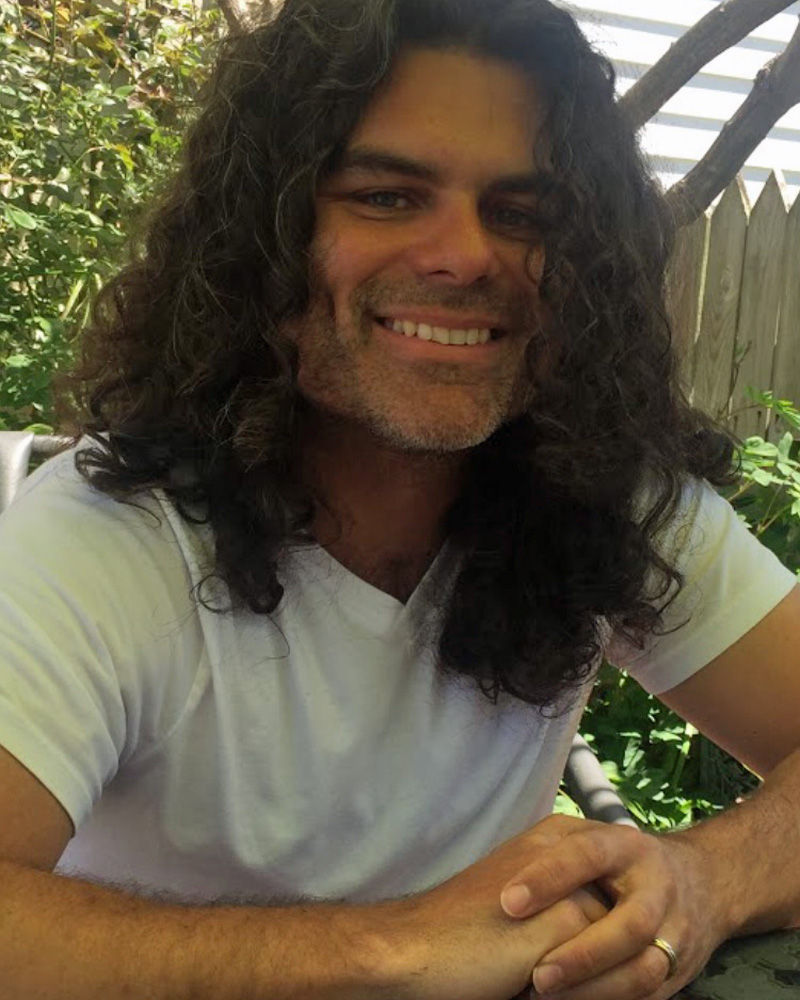
After an eight-year run at Marvel Comics that included him becoming the most prolific Deadpool artist of all time, Hawthorne has decided to move on from the publisher and branch out into new territory.
And while the story of his next big project is one for another day (we'll have that too), today we are talking with Hawthorne about this end of an era for him - following him from Deadpool to Daredevil, working with writer Gerry Duggan and editor Jordan D. White, and how he acclimated himself to each of the major books he drew in his run.
Along with this interview, Hawthorne has shared his original pencilwork to various Marvel books he's done in the past eight years.
Newsarama: Mike, your final issue of Daredevil was recently published - and as you tell me, it marks the end of an eight-year tenure at Marvel. Why was now the time to look elsewhere?
Mike Hawthorne: It's been a little longer than that, with my first book there being Machine Teen back in 2005. But under an exclusive contract, it's been something like six years? I think that's right...Though you're right in that it's been a solid eight years with a big chunk of my production being under one roof, starting with Deadpool.
As for 'why now?', I guess it just felt right. My exclusive was ending and after the chaotic year we had I've been rethinking everything. I've had the opportunity to do many amazing comics at Marvel, and more importantly, I got to make lots of friends there. But I think... I don't know... it just felt like the time.
Get the best comic news, insights, opinions, analysis and more!
That's not a satisfying answer, but I went with my gut.
After all these years I've found that many times that's the best bet.
Newsarama: There's no fault in that.
So your current stint began in 2013 with Deadpool #8, with you taking over the book after Tony Moore, working with writers Gerry Duggan and Brian Posehn. You went on to become the longest-running Deadpool artist ever - six years. Looking back, how do you view that era?
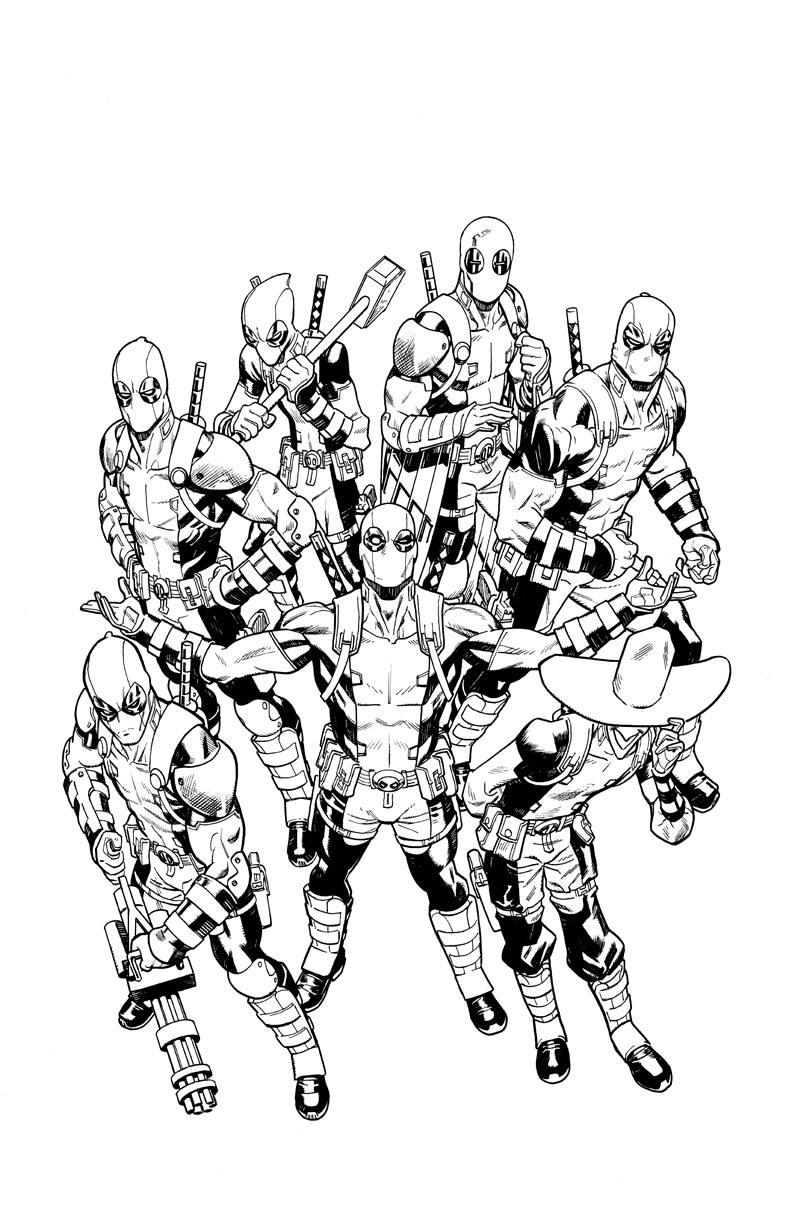
Hawthorne: I have to tell you, it's surreal. I went into it a little reluctantly.
I actually turned it down at first. I was doing a series for a French publisher, and was toying with the idea of just doing European comics for a while. It took me getting to know Jordan White [Deadpool's editor at the time] a little better that won me over, and got me to say 'yes.'
It turned out to be the most satisfying creative times of my career, to date. Things were going so well that I broke all my personal rules. I'd previously avoided staying on a book for more than 12 issues, I'd sworn off exclusives, avoided long-term commitments of all kinds.
But with this everything just clicked and I realized I was onto something special. The kind of special that you don't get often.
It was just so creatively challenging, so I never got bored. Every new arc felt like a new book altogether, from crime comics to space action. We even toyed with a Western issue. I love every bit of it!

I turned down chances to draw Superman, Green Lantern Corp, even a Kamandi series I really wanted to do... but things were working so beautifully that I didn't want to disturb anything for the risk of breaking the spell.
Newsarama: Several years removed now from your finale on Deadpool, how does it feel for many, many of your fans to know you as 'the Deadpool artist'?
Hawthorne: God, that's weird... really.
To me, Rob is THE Deadpool guy... so it's odd for me to hear comments like this.
But, I get it though. I drew a lot of Deadpool. I think with time we come to form a visual connection with an artist and a character. I think we all come to think of a specific artist's version of a character when we close our eyes, regardless of who's created the character.
I see Rob's version when I think of Deadpool, but am honored that some folks think of my version too. I suspect I'll have 'Deadpool artist' on my tombstone!
Not a bad thing to be known for.
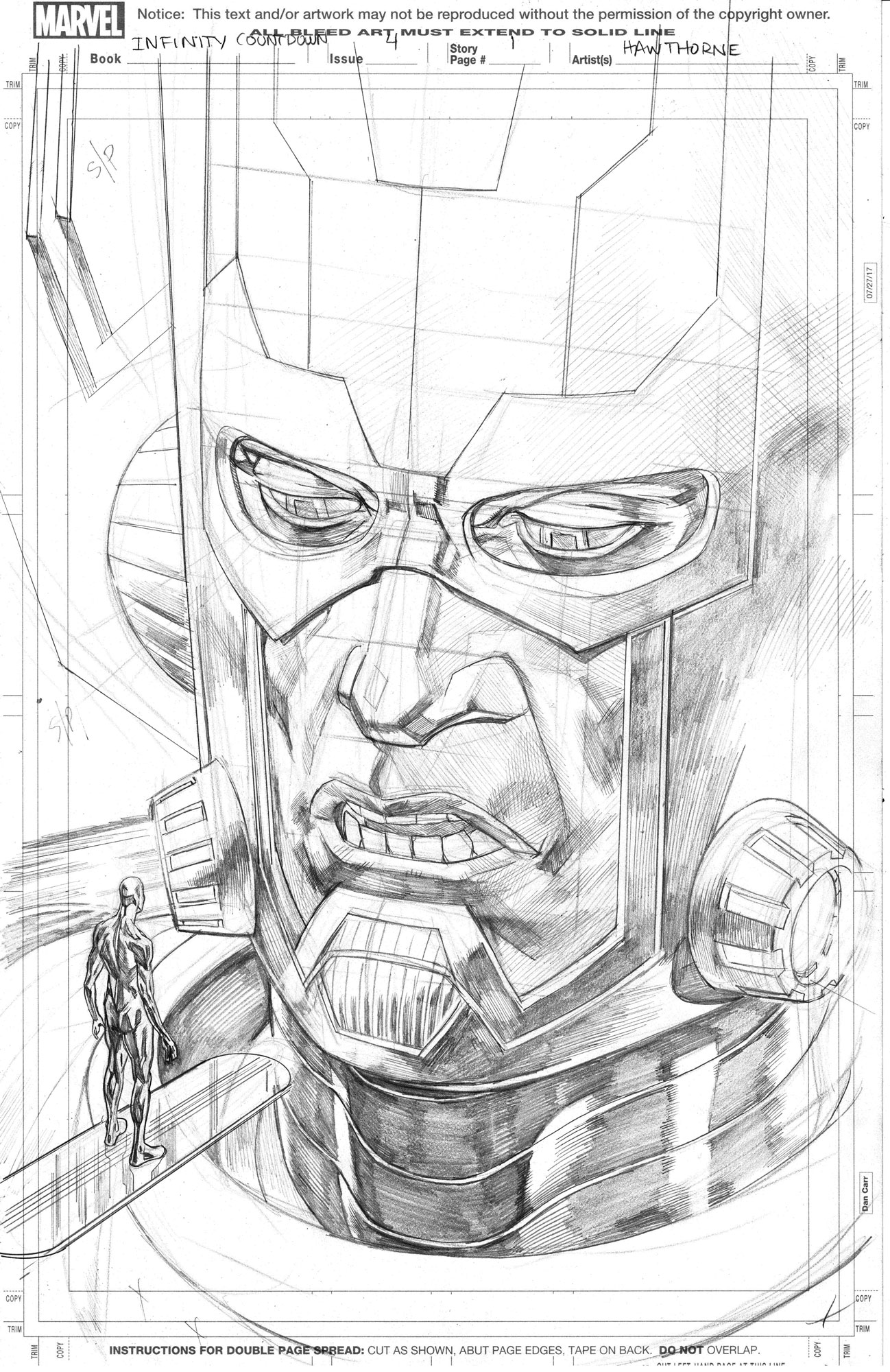
Newsarama: After that, you continued working with writer Gerry Duggan, even drawing part of his Infinity Countdown event. What was that experience like, being involved in a superhero event?
Hawthorne: Genuinely a huge thrill! I'd wanted to draw a Silver Surfer/Galactus story my entire career, so those pages are really special to me.
This desire goes back to before I was working in comics, and would do Surfer samples to send into Marvel! We take it for granted now, but a Silver man who literally surfs space?! It's the weirder mythology of the Marvel U. that I love, and jumped at the chance to draw it!
So, the 'event book' nature of it wasn't as big a draw for me as getting a chance to draw these two classic characters. I mean, how often do we get a chance to actually draw Galactus consuming a planet!?
Newsarama: Correct me if I'm wrong, but that's also one of the few times you've done a team-book - I primarily see you on solo books. Is that the luck of the draw, or do you find yourself wanting more solo books? If so, why?
Hawthorne: You're correct, and I think it was luck of the draw (or NOT draw in the case). I don't know why I wasn't asked to do more team books, but frankly, I do think I am suited for an individual book.
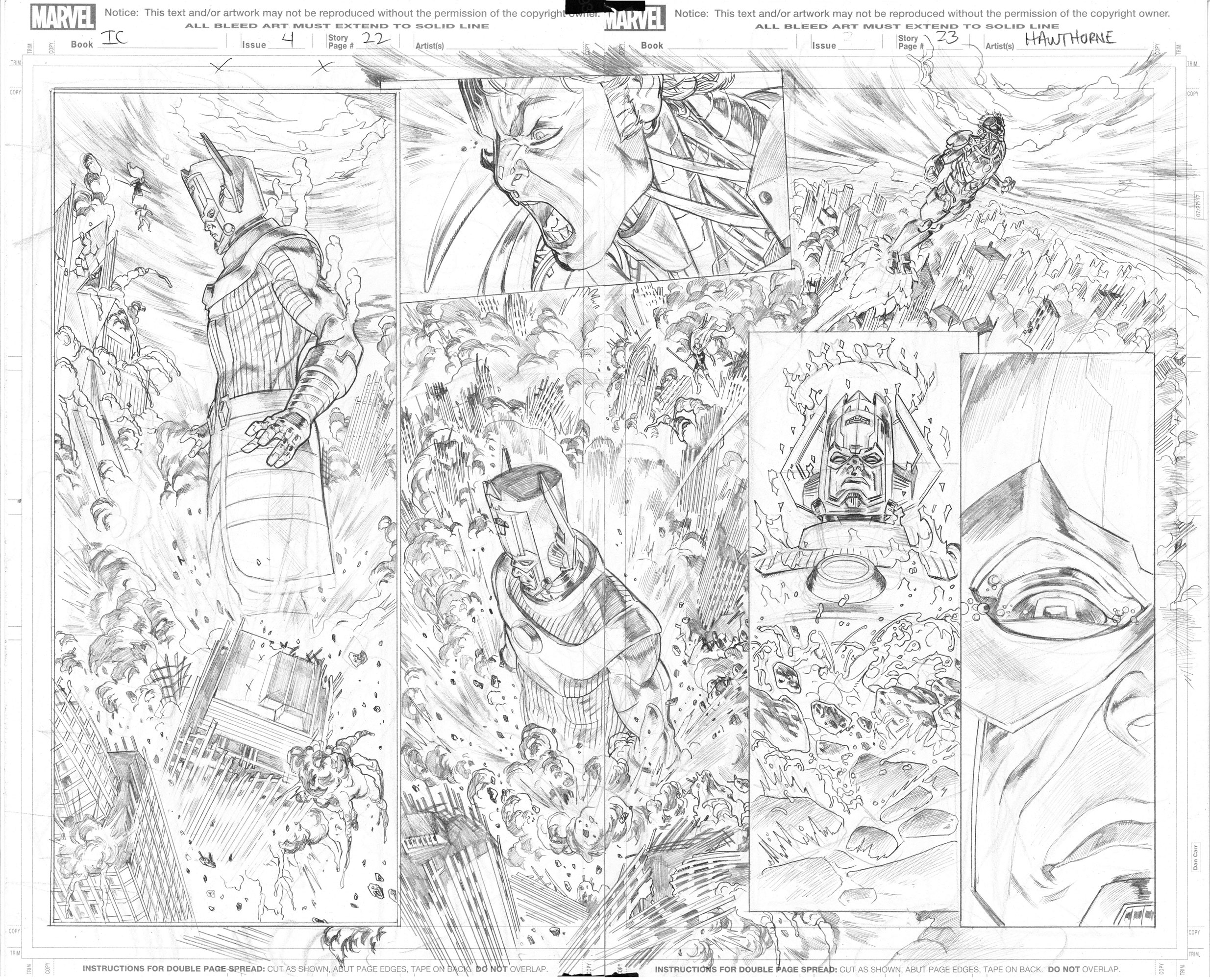
I like digging down into what makes a particular character tick over a longer story. I enjoy the challenge of really getting to know this person, and finding a way to change them a little during the course of the run.
Though, to be honest, we made Deadpool into a team book. He created a squad of his own, and for a good part of the run we were treating it as a team book.... complete with a big break-up of the team!
I really enjoyed the hell out of that!
Newsarama: As of late you've been on Daredevil, rotating with Marco Checchetto off scripts by Chip Zdarsky. For me, I've seen this really allow you to show off the more noirish part of your style - deeper shadows, more dramatic angles, etc. How do you view your time on Daredevil?

Hawthorne: After getting to draw Deadpool, Galactus and the Surfer, Spider-Man and the Hulk, I honestly thought that's more luck than any one guy should have... but Daredevil was the character that I HAD to do. Like Surfer, Daredevil was a character I used to do sample pages of. He was the kind of character I'd most wanted to draw back then.
So, getting to do this run was absolutely perfect. I could have retired after. Just amazing luck!
And you're right, I doubled down on a darker style. I jumped into a pulpier approach, relishing the chance to draw DD and his cast of villains.
Getting to draw Kingpin was as big a thrill as DD!
So, yeah... you caught on to the adjustments I wanted to make to my style with this book. I'd gotten to come full circle at Marvel, from deep space to street-level!
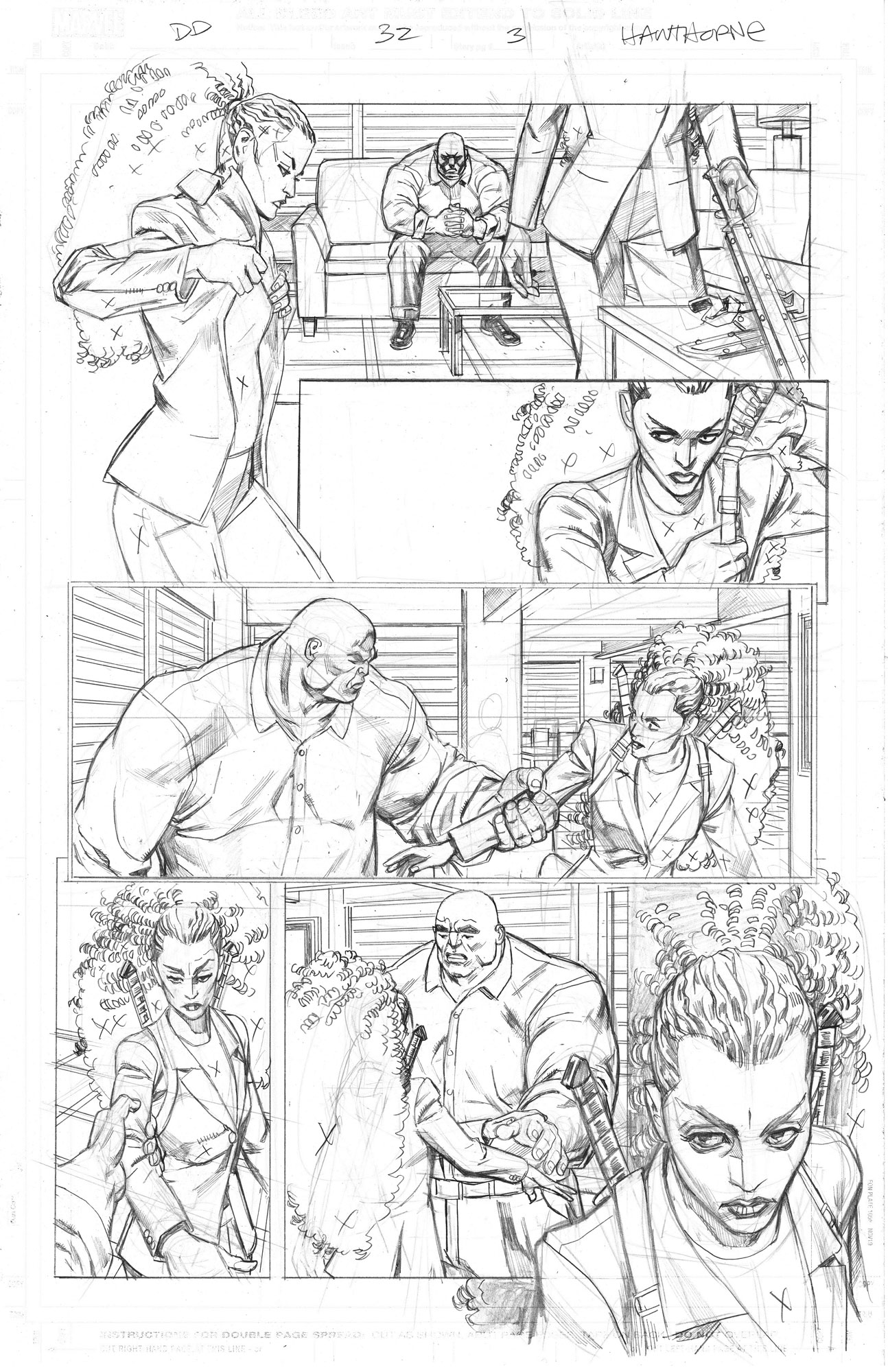
I tried to tweak the art to feel more confined, narrow, trapped at times. With Deadpool, I wanted a big action movie approach, crazy fun with an edge of danger.
Things like Infinity Countdown, I wanted to expand that way out, give it a huge scale, and made the danger match that.
With Daredevil, I wanted a kind of trapped feeling with a sense of menace that some of the other books I've done didn't have. I wanted the reader to feel like they had to keep their head on a swivel, because threats were everywhere.
Hope that makes sense.
Newsarama: Definitely. For these kinds of projects, do you really have the time to sit down and figure out how you're going to approach it, or is it pretty much just start drawing the first page when the script comes in?
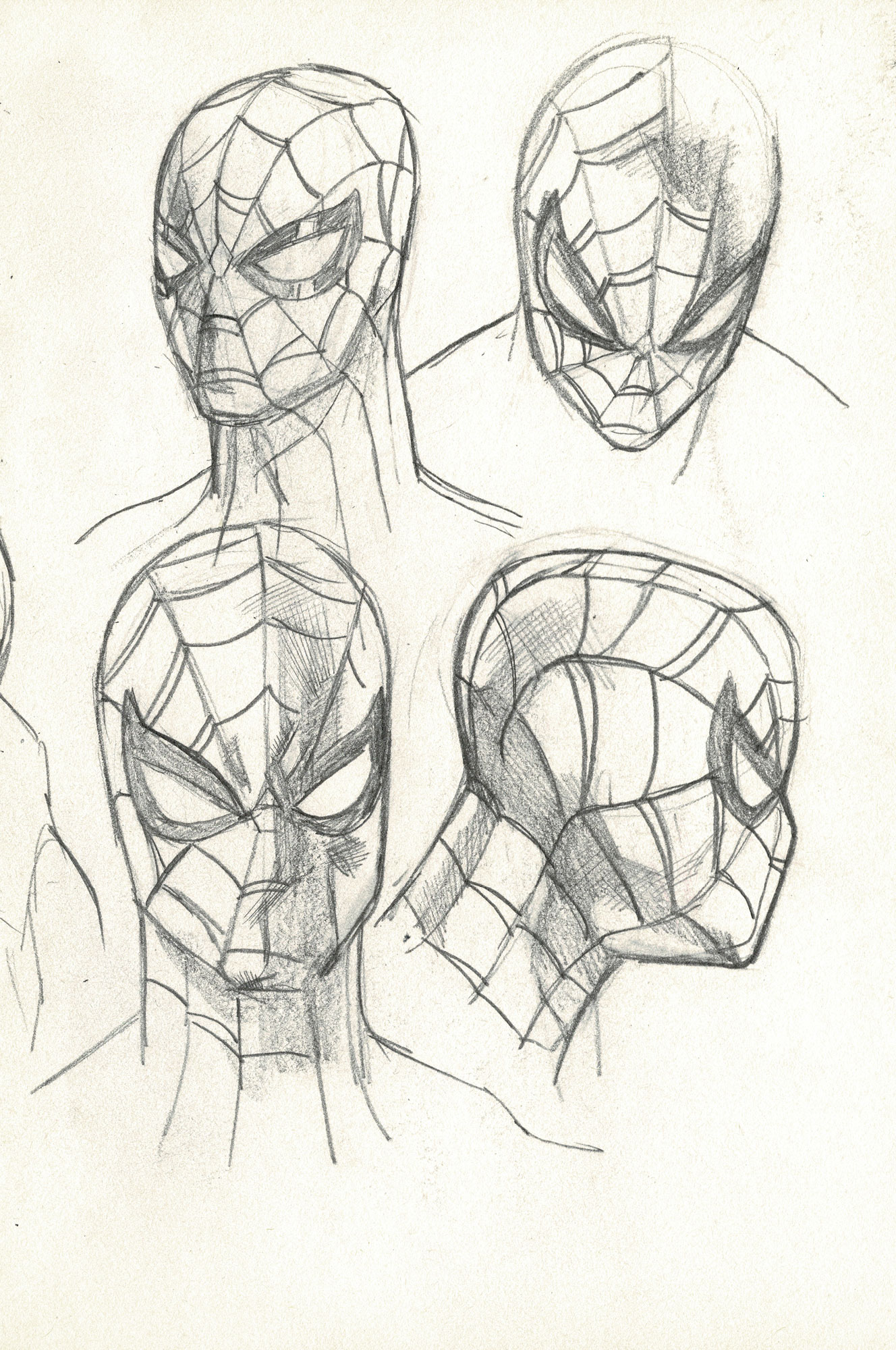
Hawthorne: I believe deeply in preparation, specifically exploratory and developmental sketching to practice how I'd approach a character or characters. For every one of these books I'll start a sketchbook 'bible' to nail down and organize my visual thoughts so when it comes time to draw pages it's my first time at bat, so to speak. I'll make notes like height, weight, nationality, fears, etc. I'll try hard to give individual traits that make each character feel like an individual.
As an example, taking on Superior Spider-Man after Amazing Spider-Man I tried hard to differentiate those characters outside of just their suit difference. For instance, I chose to make Otto squint more as Spidey as a hint at the fact that though he had a new body he was still an older man who needed glasses.
That's all stuff I have to nail down in the exploratory stage. It's vital for me. I could skip it, but the story would suffer.
Newsarama: During these eight years you haven't been exclusive to Marvel, as you published a creator-owned book with Boom! Studios, self-published several art books, and continue your teaching career. How is that part of your life doing?

Hawthorne: Incredibly well, actually (knock on wood). We just Kickstarted a big 200-page artbook, All City Vol. 1. We've been publishing art zines and books via Kickstarter, Patreon, and my store. I honestly feel incredibly fortunate, as self-publishing helped us through the COVID shutdown of comic shops.
Publishing Happiness Will Follow via Boom! Studios was also a great way to remind folks I got into this business as a cartoonist, to write and draw.
With all that in mind, I've begun working on my original series Hysteria. I'm remaking Hysteria: One Man Gang and documenting it all on my Patreon, with plans to publish it all when it's done. It's exciting because I'm not only doing new creator-owned comics but making myself document its making is allowing me to think through my process in a way that I haven't had a chance to before. It's incredibly cool to get to do this, thanks to my Patrons. I'm learning about making comics while making comics, and sharing it with people. I couldn't ask for more.
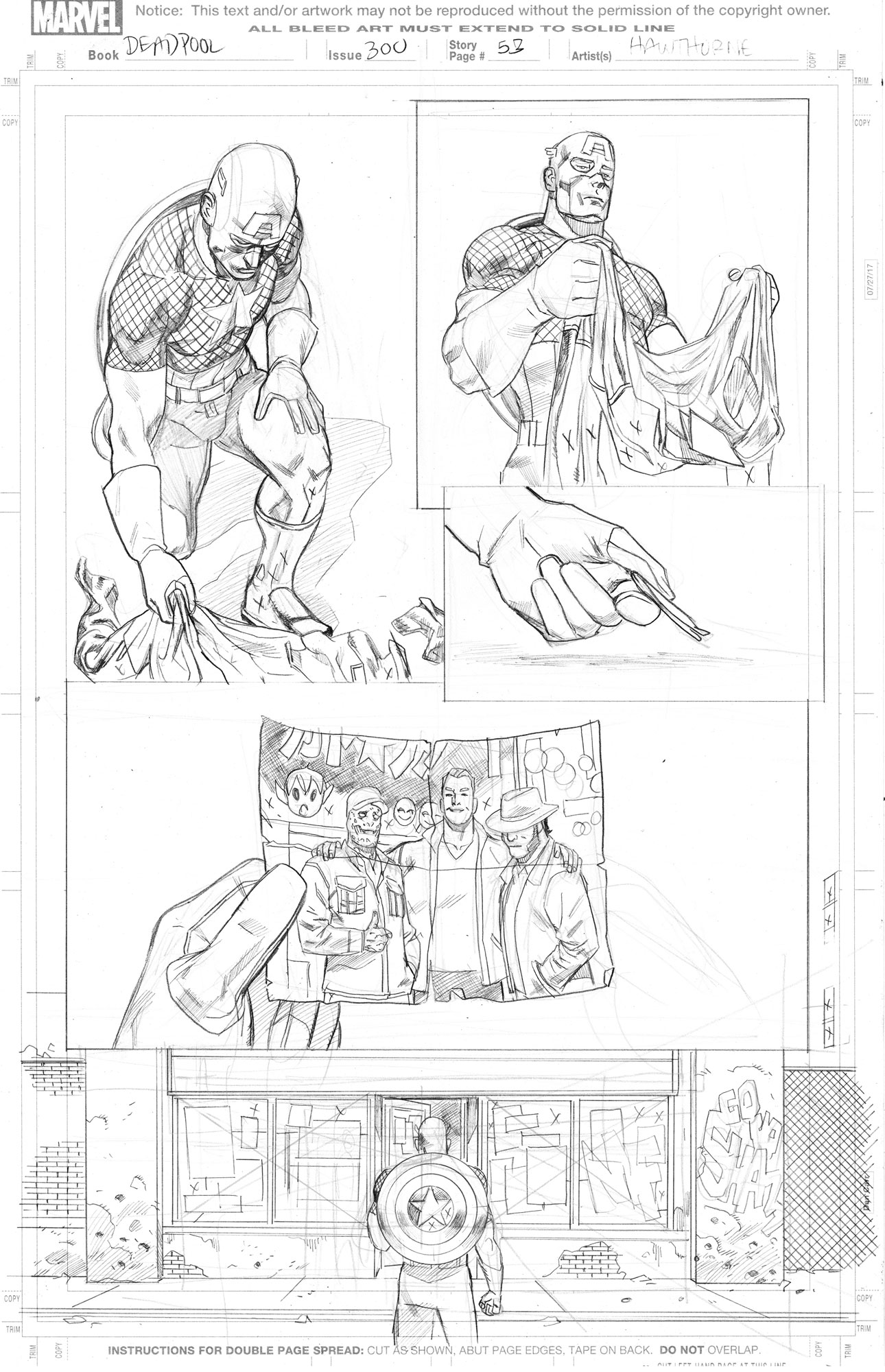
Newsarama: But you're also working on something else, that's not Hysteria and not Marvel. What does the future hold for comic artist/writer Mike Hawthorne?
Hawthorne: Well, I've already begun work on a new series. I can't say much here, but it's a bucket-list character with a writer that has been a dream to work with! The entire creative and editorial team is. I'll share more on that soon, promise.
I'll be writing and drawing more of my personal work too. I'm plotting a new book in the vein of Happiness Will Follow that I'm excited about. I already mentioned the new Hysteria, which I couldn't be more excited about.
It's an incredibly exciting time for me creatively. It feels like things are coming together in a way that will allow me to make more of the kind of work I've wanted to do for years.
Almost all of Mike Hawthorne's comics work is available digitally as well as in print. With that in mind, here are Newsarama's recommended best digital comics readers.
Chris Arrant covered comic book news for Newsarama from 2003 to 2022 (and as editor/senior editor from 2015 to 2022) and has also written for USA Today, Life, Entertainment Weekly, Publisher's Weekly, Marvel Entertainment, TOKYOPOP, AdHouse Books, Cartoon Brew, Bleeding Cool, Comic Shop News, and CBR. He is the author of the book Modern: Masters Cliff Chiang, co-authored Art of Spider-Man Classic, and contributed to Dark Horse/Bedside Press' anthology Pros and (Comic) Cons. He has acted as a judge for the Will Eisner Comic Industry Awards, the Harvey Awards, and the Stan Lee Awards. Chris is a member of the American Library Association's Graphic Novel & Comics Round Table. (He/him)



